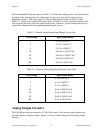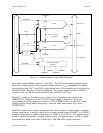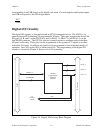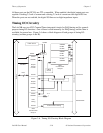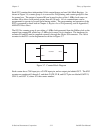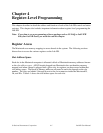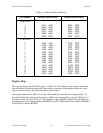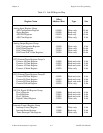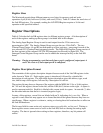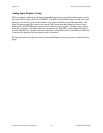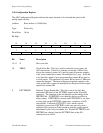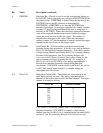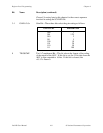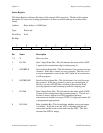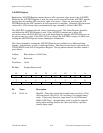Register-Level Programming Chapter 4
Lab-NB User Manual 4-4 © National Instruments Corporation
Register Sizes
The Macintosh permits three different memory word sizes for memory read and write
operations–byte (8-bit), half-word (16-bit), and word (32-bit). Table 4-2 shows the word sizes of
the Lab-NB registers. For example, reading the A/D FIFO Register requires a 16-bit read
operation at the specified address.
Register Descriptions
Table 4-2 divides the Lab-NB registers into six different register groups. A bit description of
each of the registers making up these groups is included later in this chapter.
The Analog Input Register Group is used to read output from the 12-bit successive-
approximation ADC. The Analog Output Group accesses the two 12-bit DACs. The two
Counter/Timer Groups (A and B) are each made up of four registers—one group for each of the
two onboard 8253 Counter/Timer integrated circuits. The Digital I/O Register Group consists of
the four registers of the onboard 82C55A PPI integrated circuit used for digital I/O. The
Interrupt Control Register Group can be used to enable the interrupt facility on the Lab-NB
board.
Warning: During programming, note that each time a port is configured, output ports A
and C are reset to 0, and output port B is undefined.
Register Description Format
The remainder of this register description chapter discusses each of the Lab-NB registers in the
order shown in Table 4-2. Each register group is introduced, followed by a detailed bit
description of each register. The individual register description gives the address, type, word
size, and bit map of the register, followed by a description of each bit.
The register bit map shows a diagram of the register with the MSB (bit 15 for a 16-bit register,
bit 7 for an 8-bit register) shown on the left, and the LSB (bit 0) shown on the right. A square is
used to represent each bit. Each bit is labeled with a name inside its square. An asterisk (*) after
the bit name indicates that the bit is inverted (negative logic).
In many of the registers, several bits are labeled with an X, indicating don't care bits. When a
register is read, these bits may appear set or cleared but should be ignored because they have no
significance. When a register is written to, setting or clearing these bit locations has no effect on
the Lab-NB hardware.
The bit map field for some write-only registers states not applicable, no bits used. Writing to
these registers causes some event to occur on the Lab-NB, such as clearing the analog input
circuitry. The data is ignored when writing to these registers; therefore, any bit pattern will
suffice.



